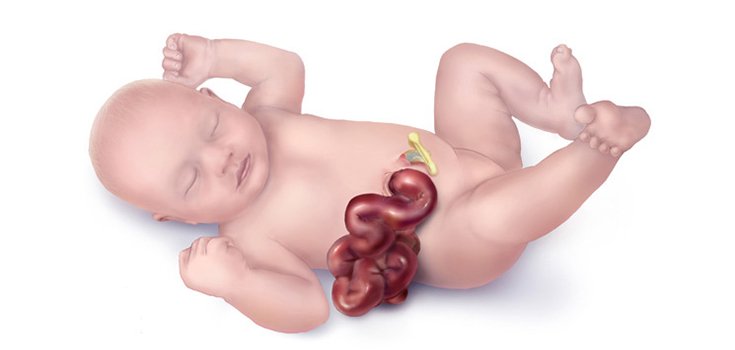A Strange Birth Defect is on the Rise in the United States, Says the CDC

A strange birth defect is on the rise in the United States, and scientists are at a loss to explain it.
Gastroschisis is a birth defect that causes a baby’s intestines to protrude outside of his/her body, through a hole in the abdominal wall beside the belly button. Sometimes this hole is very small, but it can also be quite large, and other organs such as the stomach and liver can extend from the baby’s body.
The birth defect forms during the early stages of pregnancy when the fetal abdominal wall fails to develop properly. As a result, the bowel can become irritated, causing it to shorten, twist, or swell as the intestines are not covered in a protective sac.
Surgery is required to place the abdominal organs back inside the baby’s body. In cases where the hole is large, surgery is sometimes done in stages. The defect is potentially life-threatening, and children can suffer problems with feeding and digestion of food even after surgery is completed.
Fortunately, babies that survive – and most of them do – eventually go on to lead normal lives.
The prevalence of gastroschisis climbed by about 30% to 4.9 births out of 10,000 between 2006 and 2012. This is up from 3.6 births out of 10,000 from 1995 to 2005. [1]
Gastroschisis occurs most frequently in babies born to mothers younger than 20, though the rate has increased among mothers of all ages. Young white mothers give birth to babies with the defect at a rate of 18.1 per 10,000 births. The rate among Hispanic mothers is 16.1 per 10,000 births, and the current rate among black mothers is 10.2 although it is increasing rapidly among black teens.
During the period studied, the rate among young white mothers increased 263%.
“We don’t know why,” said Coleen A. Boyle, the director of the CDC’s National Center on Birth Defects and Developmental Disabilities. “We continue to be concerned that this condition is increasing, and we do see a more rapid rise among non-Hispanic black teens.” [1]

Smokers and drinkers are more likely to have a baby with gastroschisis, but Boyle said “those are risk factors” and not causes.
“We don’t know if those risk factors are contributing to the increase,” he continued.
The defect was also found more commonly in babies born to mothers who had a sexually transmitted disease or were underweight before pregnancy.
A new report notes the increase in the defect has nothing to do with the number of babies born to teenage mothers. Teen pregnancy has declined since 1995.
Though researchers haven’t pinpointed the cause of the increase in gastroschisis, they suspect environmental factors such as mother’s diet, medications used during pregnancy, and exposures to toxins may play a role.
“Public health research is urgently needed to figure out the cause and why certain women are at higher risk of having a baby born with gastroschisis,” Boyle said.
CDC epidemiologist Suzanne Gilboa said several federally-funded studies are tracking pregnant women to try to determine the cause of the increasing instance of gastroschisis.
Sources:
